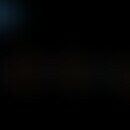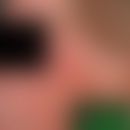Synonym(s)
DefinitionThis section has been translated automatically.
salicylic acid and 3,3,5-trimethylcyclohexanol, a derivative of cyclohexanol Homosalates are contained in almost every 2nd US-American sun cream. The salicylic acid part of the molecule absorbs ultraviolet rays with wavelengths between 295 nm and 315 nm. Homosalates can be used in cosmetic formulations.
Note(s)This section has been translated automatically.
Homosalate is chemically an ester of the UV-absorbing salicylic acid and the hydrophobic (water-insoluble) 3,3,5-trimethylcyclohexanol. The maximum permissible concentration according to the German Cosmetic Decree is 10 %.
The basic conditions for UV filters which may be used in cosmetics are defined in the EC Cosmetics Regulation (1223/2009) Annex VII. Homosalates show an antiandrogenic efficacy in vitro (Ma R et al.2003). In other cell lines (HELN, HELN ERalpha, and HELN ERbeta) estrogenic activities could be detected by homosalates (Gomez E et al. 2005).
In vitro, it has been shown that homosalates exert antagonistic effects on androgen and progesterone receptors and partly agonistic effects on oestrogen receptors (Schreurs RH et al. 2005). These results confirm the oestrogen effects on other cell lines.
LiteratureThis section has been translated automatically.
- Ma R et al (2003) UV Filters with Antagonistic Action at Androgen Receptors in the MDA-kb2 Cell Transcriptional-Activation Assay. Toxicological Sciences 74: 43-50. https://www.ncbi.nlm.nih.gov/pubmed/?term=Ma+R+et+al.(2003)++Toxicological+Sciences+74%3A+43%E2%80%9350.
- Gomez E et al (2005) "Estrogenic activity of cosmetic components in reporter cell lines: parabens, UV screens, and musks". J Toxicol Environ Health A. 68: 239-51. https://www.ncbi.nlm.nih.gov/pubmed/?term=Gomez+E+et+al.+J+Toxicol+Environ+Health+A.+68%3A+239%E2%80%9351.
- Schreurs RH et al.(2005) Interaction of polycyclic musks and UV filters with the estrogen receptor (ER), androgen receptor (AR), and progesterone receptor (PR) in reporter gene bioassays. Toxicol Sci 83: 264-272. https://www.ncbi.nlm.nih.gov/pubmed/?term=Schreurs+RH+et+al.(2005)+Toxicol+Sci+83%3A+264%E2%80%93272.




